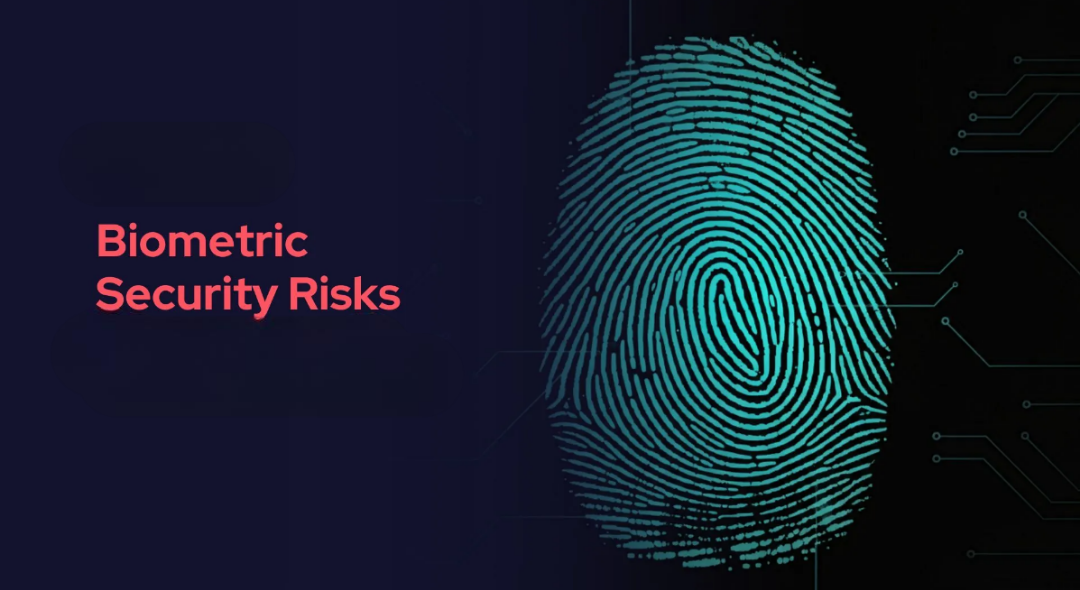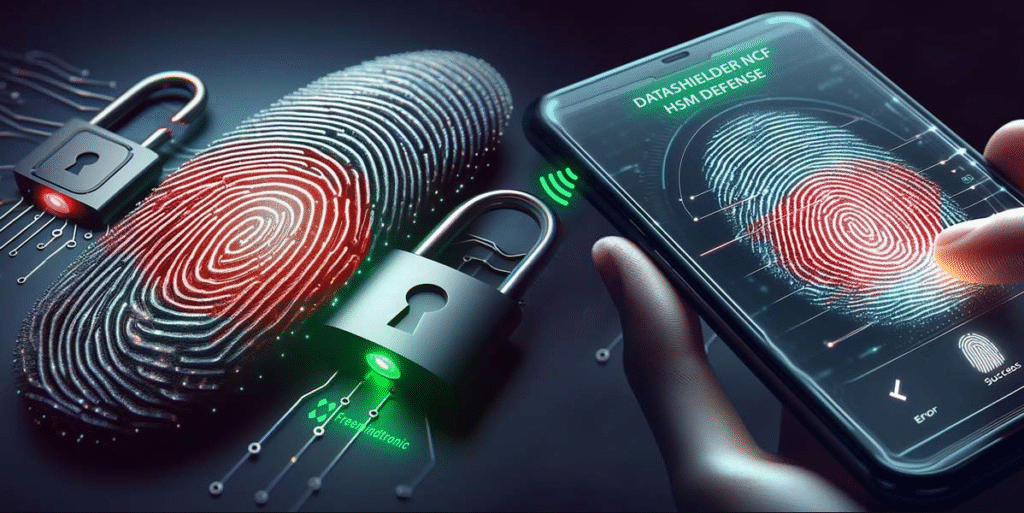Biometric data ethics and security
Now that taking out your smartphone with one glance or rushing through airport checkpoints with a face scan feels so easy, such conveniences, driven by biometric technology, are already ingrained in daily life. Biometric data—singular points of identification like fingerprints, facial structures, or voice prints—has reshaped industries such as medicine, finance, and security. However, such game-changing technology comes with essential concerns over biometric data ethics and security. While offering unmatched convenience and robust security, it also poses tremendous privacy risks and security vulnerabilities. This article explores the benefits, ethical issues, and security concerns of biometric data, responding to expert queries about proper usage and future directions.
Understanding Biometric Data
What is Biometric Data?
Biometric data are unique physical or behavioral features used as a method of identification of people. Fingerprints, iris scan, facial recognition, voiceprint, or even DNA are what come to mind. They are unique and virtually impossible to fake in a realistic manner, unlike passwords.
Biometric identification is everywhere: opening cell phones, protecting access to the workplace, or verifying identity at borders. Its strongest advantage lies in its specificity: two prints or iris patterns never match, making it a strong tool of verification.
Why Biometric Data Matters
The world biometric market is booming. The market will be worth $82.8 billion in 2030 as a result of consumer device, government, and enterprise security requirements, as Gartner forecasts. Biometrics are redefining the game on how we can interact with technology, from smart homes to banking apps.
But power comes with responsibility. Appearance of biometric data requires an intelligent trade-off between convenience and biometric data security and ethics. Fumbles may mean privacy invasion or data loss and thus the ethical considerations are as important as the technological ones.
Advantages of Biometric Data
Improved Security
Biometrics provide that one-of-a-kind feeling of security which passwords cannot. Passwords can be stolen, sold, lost, or misplaced, but your voice and your fingerprint belong to nobody but you. Banks do voice verification to validate transactions and prevent fraud. A 2023 study by Visa had found a 70% decrease in attempts for fraud after biometric verification was implemented.
This is the potential of biometrics’ integration with cybersecurity systems, which makes intruder entry a thousand times harder.
Convenience and Efficiency
Biometrics make user interactions easier. Biometric face recognition in airports minimizes waiting time, and fingerprint readers on mobile devices minimize typing passwords. Financial apps like Chase and HSBC use biometrics to make logins easier, save users’ time, and provide security. According to a 2024 case study by JPMorgan, user satisfaction increased by 40% after it introduced biometric login processes.
Accuracy and Reliability
Biometric systems have very low error rates. Fingerprint readers, for example, have been found by IEEE research to have more than 99.5% accuracy rates, much higher than conventional PINs. This level of reliability makes biometrics the best choice for high-risk applications such as law enforcement or accessing medical records, where accuracy is not a possibility.
Ethical Challenges of Biometric Data
Privacy Concerns
The identical identifying characteristic that makes biometric data robust makes it susceptible. Illicit collection or surveillance kindles trust. General outcry against facial recognition technology in San Francisco and other metropolitan areas, for example, led to bans, reported the Electronic Frontier Foundation in 2024. Citizens were worried about unchecked monitoring, which created biometric data privacy concerns.
Lacking safeguards, biometric systems can turn into mass-monitoring technologies, which is not desirable on an ethical scale.
Informed Consent
The users themselves do not ever know how their biometric data is taken, stored, and utilized. The GDPR in the EU, enacted in 2018 and amended in 2024, demands explicit consent for data to be used biometrically, but is sporadically enforced. A case study in 2023 found that 60% of European companies were unable to describe biometric data policy to users in simple language, leaving them open to exploitation.
Potential for Discrimination
Biometric software is not infallible. Although several studies, most recently the one done by MIT in 2023, found that facial recognition technology misclassified darker-skinned and female faces more than lighter-skinned male faces, bias can emerge in discriminatory policing, hiring, or security. Reducing these variations is critical to safe biometrics use.
Data Ownership
Who possesses your biometric data once it’s collected? Governments and corporations retain it forever, creating issues of overreach. There is an issue of ethics: Should users have the right to remove their biometric data? Privacy groups, such as the ACLU, advocate greater user control in order to avoid abuse.
Security Risks of Biometric Data

Data Breaches
Whereas passwords can be changed, biometric data cannot. It will not be possible to recover if stolen. India’s Aadhaar database of over 1 billion citizens’ biometric data was hacked in 2019, says Reuters. This shows that strong data security measures are required because a single attack may cost a lifetime.
Hacking and Spoofing
Biometric systems are far from being unattackable. Artificial fingerprints, 3D-printed masks, or deepfakes are employed by hackers to circumvent the authentication process. A 2024 Kaspersky report announcing a cybersecurity report saw a 30% increase in spoofing attacks on facial recognition systems. Such attempts require sophisticated countermeasures for safeguarding the users.
Absence of Standardization
Hybrid security protocols across industries encourage vulnerabilities. ISO/IEC 30107 establishes the standards for biometric security, yet there is no standard application. Implementing outdated encryption in some firms makes them vulnerable. Ethics and biometric data security measures must be standardized to avoid exposures.
Regulatory Frameworks and Best Practices
Existing Laws
Global regulation is evolving to address biometric concerns. GDPR in the European Union considers biometric data to be sensitive and therefore requires robust consent and transparency. CCPA 2024 in California requires data usage disclosure in transparent terms. Singapore’s evolving biometric-specific legislation in Asia was reported by TechCrunch in 2025. Illinois Biometric Information Privacy Act (BIPA) in 2008, an early mover, is a gold standard with recorded consent and data limits on retention.
These biometric policies are meant to safeguard users while they innovate.
Best Practices for Organizations
Organizations need to:
-
Encrypt biometric data upon storage and transmission using standards like AES-256.
-
Implement open data consent practices, identifying where the data will be stored and processed.
-
Routine audits to comply with regulations like GDPR and BIPA.
A 2024 NIST report identified that encryption and audits reduced breach threats by 50% in compliant organizations.
Role of Technology in Ethical Implementation
Cloud storage threats are alleviated through on-device biometric authentication (Apple Face ID, for example) technology. New technologies like homomorphic encryption provide data analysis without decryption, which means more protection for the data. Federated learning, local device learning, alleviates centralized data risk, as outlined in a 2025 IEEE paper.
The Future of Biometric Data Ethics and Security
Emerging Trends
AI is reshaping biometrics, increasing precision and reducing ethical concerns. Multimodal biometrics, which combine fingerprints, iris scans, and voice, make verification more reliable, with a 2025 Gartner report predicting 60% adoption by 2030. More robust, more fair systems are on the horizon.
Balancing Innovation and Ethics
Public-private partnership is at the heart of ethical responsibilities. World Privacy Forum’s 2024 initiative had world technology firms and regulators together developing biometric ethics guidelines. These efforts do not allow innovation to outrun responsibility.
Consumer Empowerment
Education of individuals regarding their rights is very crucial. Biometric data privacy dashboards, enabling users to monitor and delete their biometric data, are gaining popularity. In a survey conducted by Pew Research in 2025, 75% of the consumers asked for greater control over their biometric data, indicating a shift towards user-centric systems.
FAQs About Biometric data ethics and security
What is biometric data, and why is it sensitive?
Biometric data are immutable traits such as fingerprints or facial scans. Since it is not changeable, it is sensitive, hacked, and cannot be altered, exposing people to risks for their lifetime.
How do organizations facilitate the ethical use of biometric data?
Transparency must be a priority for companies, with clear data consent and strict compliance with regulations such as GDPR and BIPA. Auditing and encryption also ensure ethical behavior.
What are the effects of biometric data breaches?
Data breaches reveal immutable data, resulting in fraud or identity theft. Effective data protection controls, such as encryption and safe storage, are required in order to avoid risks.
Are biometric data legally protected?
Yes, there are regulations such as GDPR, CCPA, and BIPA that govern biometric data, and consent and transparency have to be achieved. New biometric legislation being created in Asia and elsewhere is expanding protections.
Are biometric systems hackable?
Yes, systems can be attacked using spoofing or deepfake attacks. Cybersecurity products, such as anti-spoofing algorithms, are resisting these vulnerabilities.
Conclusion: Biometric data ethics and security
Biometric data stands second to none in terms of security and convenience, transforming our lives and work. Its security and ethics problems—risk of privacy, vulnerability to bias, and risk of breaches—should be addressed with utmost precaution. By adopting biometric data protection and ethics, people and entities can make safe use of the technology. Be mindful of biometric legislation, promote ethical use, and drive innovation that puts humans first. The future of biometrics is harmony between advancement and accountability to ensure technology serves humankind without sacrificing our rights.
If you want more Information, explore our website: Iofbodies

